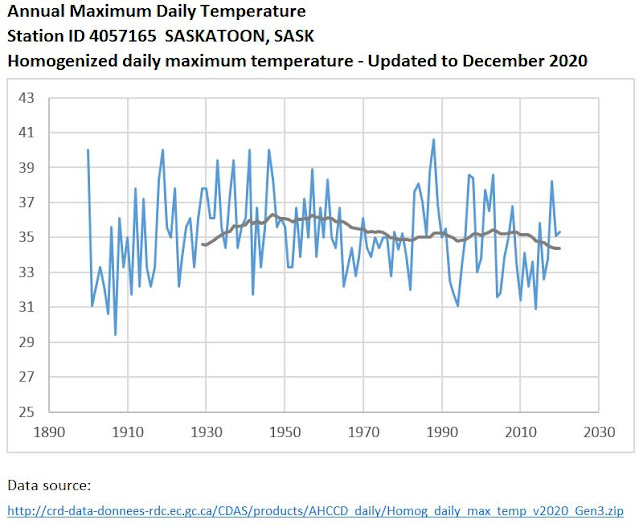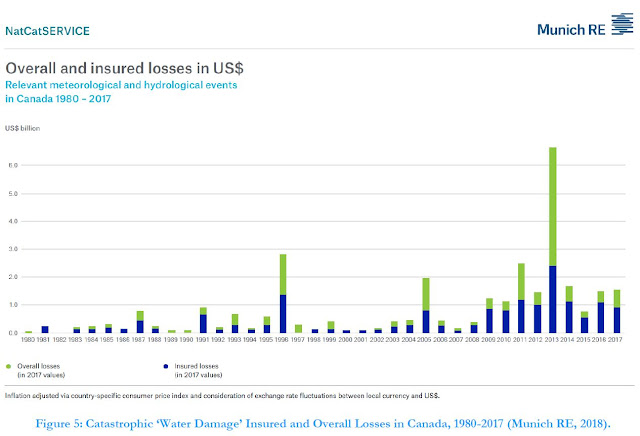Hi all,
Thank you so much for your interest in CityFloodMap.com and the material that I post. We have just surpassed half a million views!
I started this blog in 2013 when many of the topics covered were popping up at work and I realized that they deserved a "deep dive". As the very first post says:
"Welcome to the Urban Flooding blog.
The blog is intended to support discussion on urban flooding issues and solutions. It will share information on urban flood risk management through long term strategies including risk identification, prioritization and prevention.
Rob"
That explains the 'Why?" of this blog, to better characterize urban flooding and how we should best address it. The need for this material is now as important as ever as the Canadian government develops and advances its climate change adaptation strategy.
I'd like to thank a few people for putting me on the right track. That includes Dr. Barry Adams, my Master thesis supervisor (and the reason I switched from structural engineering to water resources during my undergrad degree). I had reached out to Dr. Adams following my earliest reviews of extreme rainfall trends, asking if he also saw the disconnect occurring in the media, and even in the engineering community - how come the facts and data on extreme rainfall were not being openly acknowledged? My concern was that residents in the community where I work (and also senior staff and decision/policy makers) were being misguided and that could adversely affect the direction of adaptation initiatives for flood control. Dr. Adams encouraged me to publish some of my findings and that ultimately that led to the paper "Evidence Based Policy Gaps in Water Resources: Thinking Fast and Slow on Floods and Flow" in the Journal of Water Management Modeling (https://www.chijournal.org/C449).
Others I'd like to thank include our previous MPP Arthur Potts (https://en.wikipedia.org/wiki/Arthur_Potts_(politician)). I met with MPP Potts early on suggesting that the province of Ontario needed to be better aware of extreme rainfall trends and the drivers affecting infrastructure investment priorities. MPP Potts suggested that advancing these ideas would be most-effectively be made through professional, industry organizations to provide a stronger voice what could help shape policies and standards. With that began my work with Ontario's Municipal Engineers Association and its Ministry of the Environment liaison committee, the Water Environment Association of Ontario and its Collection Systems and Government Affairs committees, and the Ontario Society of Professional Engineers and its Infrastructure Task Force. These have proven to be effective avenues for sharing technical information that can shape policies and priorities reflected in legislation, guidelines and standards.
Dr. Adams also helped make connections with others who shared an interest in advancing ideas in this blog connecting me with Fabian Papa, a University of Toronto alumnus and founding partner of fabian papa & partners (https://www.fabianpapa.com/) and a principal of HydraTek & Associates. Together we have been advancing many of the ideas in this blog through several channels: a white paper on policy gaps for the National Research Council of Canada, peer review of risk research for a local Conservation Authority, presentations at technical workshops, regional and national conferences (WEAO, CWWA), magazine articles (WEAO Influents) and most recently the development of the National Research Council of Canada's flood control cost benefit guidelines (https://nrc-publications.canada.ca/eng/view/object/?id=27058e87-e928-4151-8946-b9e08b44d8f7).
Some people in the insurance industry have also been interested in the material on this blog. I was invited by Insurance Business Magazine to present at their 2016 Flood Master Class (https://www.slideshare.net/RobertMuir3/flood-plains-to-floor-drains-design-standard-adaptation-for-urban-flood-risk-reduction) - my presentation "Flood plains to floor drains design standard adaptation for urban flood risk reduction" spoke to factors other than changes in extreme rainfall affecting flood risks, and the role of historical standards for storm drainage, wastewater collection and floodplain management driving flood risks and adaptation needs.
One insurance industry practitioner had reached out to me based on the mapping of 'lost rivers' to confirm that flood claims in Toronto during the extreme July 8, 2013 event were correlated to my estimated overland flood hazard areas. Others, including third parties providing flood risk information to the insurance industry, have been generous in sharing their estimated riverine and urban/pluvial hazard and damage mapping estimates, and risk scores based on historical claims. This has all help shape the research and findings in the blog and beyond (e.g., as part of consulting assignments), supporting the focus on other evidence-based risk factors beyond extreme rainfall trends.
Through a connection Fabian made with the former Environmental Commissioner of Ontario, and as a follow-up to a presentation we made to her office, the insurance industry also shared detailed loss data to support Ontario trend analysis. Similar information was also shared for other regions to support the National Research Council of Canada's flood control cost benefit guideline development - thanks IBC! Some interesting take-aways in the guidelines using industry data were summarized in this blog post: https://www.cityfloodmap.com/2022/02/nrc-national-guidelines-on-flood_27.html. Thanks also to Munich Re for custom Canadian data provided and CatIQ for letting us showcase some of their insightful loss and claim data.
Through this blog I was able to support researchers developing seed documents for national standards - this post "Reducing Flood Risk from Flood Plain to Floor Drain, Developing a Canadian Standard for Design Standard Adaptation in Existing Communities" (https://www.cityfloodmap.com/2018/02/reducing-flood-risk-from-flood-plain-to.html) was foundational research for the Intact Centre on Climate Adaptation's 2019 seed document "Weathering the Storm: Developing a Canadian Standard for Flood-Resilient Existing Communities" (https://www.intactcentreclimateadaptation.ca/wp-content/uploads/2019/01/Weathering-the-Storm.pdf). Subsequently I was on the Canadian Standard's Association's technical subcommittee advancing the standard based on the seed document and called "CSA W210:21, Prioritization of flood risk in existing communities" (https://www.csagroup.org/store/product/2705176/).
Of course it has been a lot of work - but most of all it has been interesting and worthwhile research that has led to very rewarding connections and accomplishments in guiding risk identification, prioritization and prevention. It has been great to see earlier findings in the "Evidence Based Policy Gaps in Water Resources: Thinking Fast and Slow on Floods and Flow" paper on normalized insurance loss trends later reflected in the Canada in a Changing Climate: National Issues report in 2021 - it shows losses increasing primarily due to growth, not climate effects. Having that paper's earlier findings on extreme rainfall intensity trends in Ontario expanded across Canada and published in the NRC cost benefit guidelines was a worthwhile as well - those trends help define risk drivers and guide the most effective adaptation solutions.
Material in this blog has helped frame discussions in the media and improve the accuracy of reporting on extreme weather trends and risks too. Editors and the Ombudsman offices at Radio-Canada and CBC have corrected or even deleted inaccurate reporting on that topic over the last several years - several examples are summarized here: https://www.cityfloodmap.com/2019/06/cbc-correcting-claims-on-extreme.html. Why this is important can be seen in this presentation that shows how arbitrary theoretical shifts in extreme weather have been mistakenly described as actual changes in federal data sets: https://www.slideshare.net/RobertMuir3/storm-intensity-not-increasing-factual-review-of-engineering-datasets. The presentation "Storm Intensity Not Increasing. Review of Weather Event Statement in Insurance Bureau of Canada’s “Telling the Weather Story” prepared by Institute for Catastrophic Loss Reduction." shows this quite clearly.
Some media have been effective partners at spreading more accurate perspectives on flood risks founded on data and promoted on this blog - for example Financial Post published an article by me and Dr. Bryan Karney entitled "Fast flood science needs slow thinking Junk Science Week: Media stories on rain and floods bungle the science" (https://financialpost.com/opinion/fast-flood-science-needs-slow-thinking).
In recent years other keen practitioners including former colleagues from across the country have collaborated to promote a better understanding of the design factors affecting risk and resilience in storm drainage systems, as in the technical publication "Toward More Resilient Urban Stormwater Management Systems—Bridging the Gap From Theory to Implementation" (https://www.frontiersin.org/articles/10.3389/frwa.2021.671059/full). A current colleagues has also collaborated on conference papers and presentations to better characterize design considerations affecting risks in wastewater collection systems, including at local WEAO workshops and conferences (e.g., see "Wastewater Collection System Performance Under Climate Change – Safety Factors and Stress Tests for Flood Risk Mitigation", paper: https://drive.google.com/drive/folders/1rB87RHti_XiYHWV-5XeBvBXMq1MVMD0Z?usp=sharing, presentation: https://www.slideshare.net/RobertMuir3/wastewater-collection-system-performance-under-climate-change-safety-factors-and-stress-tests-for-flood-risk-mitigation). These collaborative efforts help advance the fundamental goal of the blog.
That's where I've been. There is some more to come. I led the drafting of Natural Resources Canada's federal flood mapping guideline series on risk prioritization ("Flood Hazard Identification and Priority Setting") a couple years ago. That guideline, once finalized and released could also guide in the screening of flood risks to support further detailed analysis of hazards, damages and prioritization of adaptation needs. I'll be sure to cover any highlights here.
Thank you for reading the blog, and thank you to those who have supported all the related research, and standards and policy advocacy.
Robert Muir
June 5, 2022















































